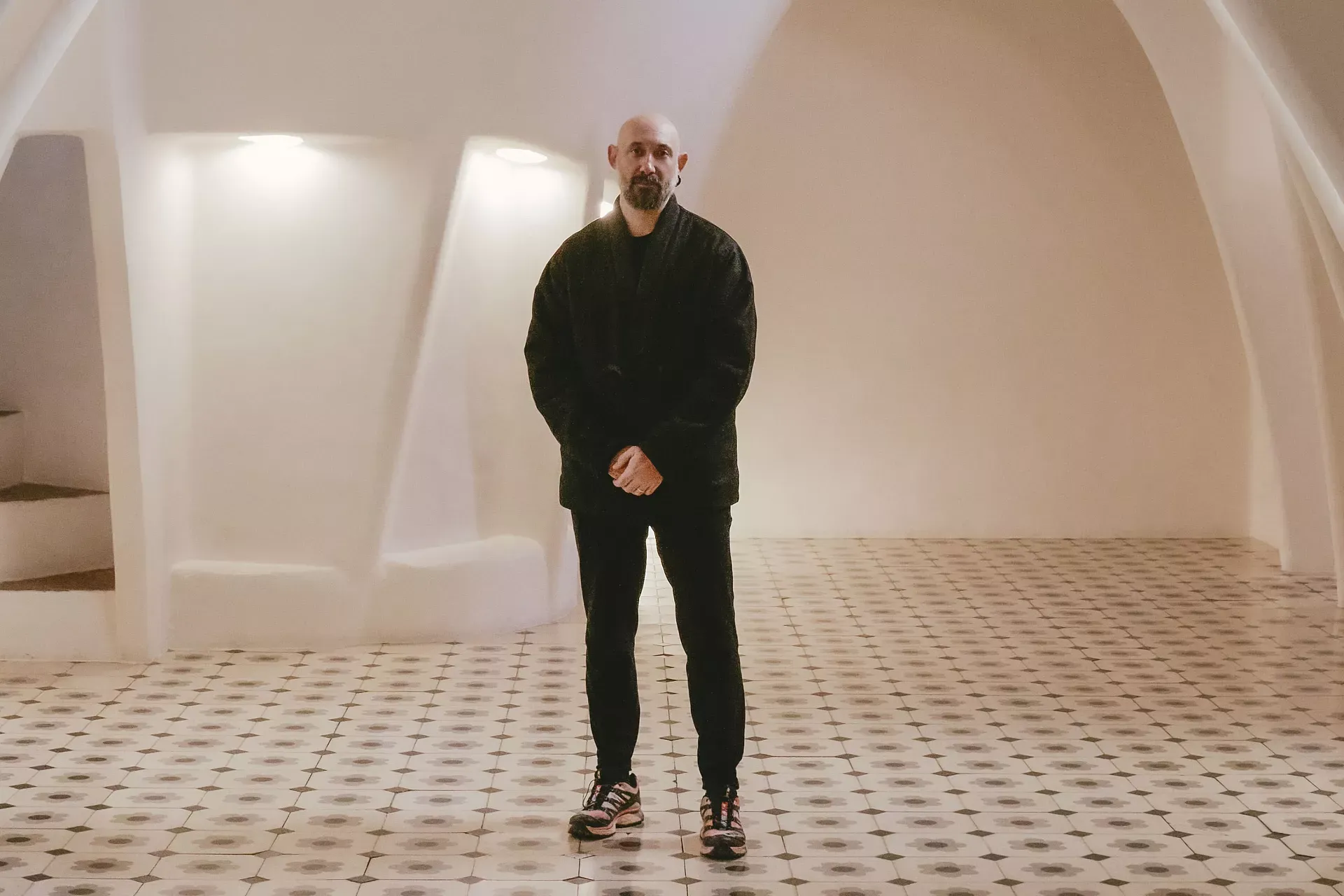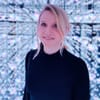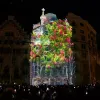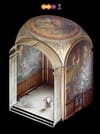Can computational art carry forward the traditions of classical painters? Italian artist Davide Quayola believes so. His latest project, Arborescent, transformed Barcelona’s Casa Batlló on February 1 and 2 into a digital forest—blurring the lines between past and future, nature and technology.
In collaboration with the tech trade show Integrated Systems Europe (ISE) and Casa Batlló, the projection mapping performance drew over 110,000 people to Passeig de Gràcia. After Refik Anadol and Sofia Crespo, Quayola was the third artist invited by Casa Batlló to perform the annual mapping. The Overview spoke to him about his creative journey and why he doesn’t follow every technological trend.
“I tend to think of my videos as works of contemplation, something that takes time to delve into, " says the Italian mixed-media artist on a Wednesday afternoon at Integrated Systems Europe (ISE), the global annual tech show for the audiovisual industry. “My works are usually exhibited in intimate spaces where people can spend time and connect with them more easily. Projection mapping, instead, is a radically different context compared to how I usually work. You have a large audience that needs to be captured for a short amount of time. Lighting comes from many different angles, and you are in the middle of Barcelona with plenty of distractions. So the work has to take this context into account and be particularly engaging.”
Davide Quayola on bridging art and technology. Interview by The Overview
"Gaudí’s architecture feels less designed and more like it was grown"
–Davide Quayola
For Arborescent, Quayola researched Gaudí’s work meticulously, guided by the team from Casa Batlló to the architect’s most iconic places.“Everywhere I looked, I found this incredible interconnection with nature. Gaudi's architecture feels less designed and more grown. To symbolize this I centered the work around computer generated organic structures referencing trees.”
That idea also reflects the title Arborescent, a botanical term to describe trees and plants or fungi and coral, that rather resemble or behave like trees. “It's also used a lot in data science to describe tree-like structures. So I loved this idea that you could have something digital that reminds you of an actual tree. These trees for Arborescent aren't really designed, we essentially “farmed” the seeds computationally and then they follow their own rules of growth. Maybe they remind you of some trees you’ve seen before, but they have nothing in common with the natural world.”
Projection mapping performance Arborescent at Casa Batlló by Davide Quayola.
Looking at something familiar through a different lens
The contradictory is a recurring theme in Quayola's works, in which he often combines sophisticated technology and classical art influences. Growing up in Rome the city’s rich cultural heritage has left a deep impression on him. His mother, a passionate painter, fostered his interest in the arts from an early age and enrolled him at a traditional fine art high school in the city. There, he also learned the visual analysis of paintings.
“We had to describe classical paintings without focusing on their narratives or perceptual points of view, but instead trying to grasp the visual characteristics, such as the use of light and color. It's actually quite a complicated exercise to talk about a painting with great iconographic symbolism that way. I remember the teachers even made us flip the painting upside down so we wouldn’t be influenced by elements that we could trace back to some narrative.”
Quayola described this task as "looking at something familiar through a different lens, completely detaching and re-understanding a work of art.” This approach stayed with him, but instead of flipping classical paintings upside down, today he uses technology. The machine becomes his collaborator, an additional pair of eyes through which he can discover new aesthetics.

“I try to put myself in the shoes of a historical painter”
–Davide Quayola
When he first started his technological experiments in the late 90s using the CAD architecture software of his older brother, he enjoyed exploring the endless possibilities in the virtual world without the limitations of the physical one. “I was also very inspired by the electronic music revolution of the 90s, which enabled music making in a completely new way. I immersed myself in this culture and my first visual experiments were shown within the context of electronic music.
When I went to art university in London at the age of 19 to escape my classical background, I discovered this whole community of people experimenting with technology. Those years from 2000 to 2010 were a very defining period for me artistically. And then almost ironically, my work started to go back to the history and heritage of fine art again. Until today, I have this fascination for the tradition of landscape painting and how observing nature can become a vehicle to discover new aesthetics. So, I try to put myself in the shoes of an historical painter who goes out on these sessions, but instead of using an easel, brush and paint, I’m bringing along different technological apparatuses, like cameras and scanners.”
“My fascination is not just nature itself, but our long lasting tradition of observing nature as an artistic vehicle to create new aesthetics”
–Davide Quayola
This fascination for landscape paintings also shows in Quayola’s series Storms from 2022, which he describes as an homage to the work of Romantic painter William Turner, known for his use of brilliant colors to depict natural light. “Turner's works were almost like meteorological studies of the sea, which led him gradually towards abstraction. I love how the new aesthetics at the beginning of the last century, all of the avant-garde, often was inspired by artists like Turner who had been painting nature—like, for example, Monet.
So my fascination is not just nature itself, but our long lasting tradition of observing nature as an artistic vehicle to create new aesthetics. It's this kind of universal theme and sometimes I like to think about my work as something that wants to be part of that tradition of landscape painting, to continue its legacy in a contemporary way by using technology.”
Excerpt of Quayola's video series Storms.
In the case of his series Storms, Quayola went to Cornwall and recorded the behaviors of waves that were translated into datasets. With the help of custom-made software built in his studio, he then delved into the data like an explorer, trying to gather and extract information to transform it into abstract computational paintings. This digital “painting tool” used for Storms has been developed and refined over the course of several years of research and also serves to document the algorithmic process.
“I love this kind of duality in which the subject of these paintings is not just nature, but also the gesture itself. It’s similar to Monet’s thick brush strokes that are not just about the landscape but also a documentation of a visual process, a personal expression written on the canvas.”
“Art is all about what you cannot measure and the problems that you cannot solve”
–Davide Quayola
Quayola doesn’t allow technology too much autonomy, instead he finds personal ways of expressing his ideas and experiences by using the software. The tools he develops have hundreds of parameters that he can calibrate in a refined way, interact with these systems in real time and record the outcomes of those interactions. He takes his time mastering a tool, before experimenting with a new technology.
“I’m a bit resistant to exploring new technologies too quickly and prefer to apply brakes because otherwise I would simply be jumping into a new tool which would be driving too much of the end result. I think that's a dangerous game. Technology moves fast, but ideation, artistic creation and critical thinking take time, sometimes many years. Technology can become a distraction, so when someone asks me about what I do, I don’t say I’m an artist working with technology because that’s an aspect that might change in the future.
One problem with making art is that it takes a long time to figure out what your visual language is. And then it might also take a long time for the rest of the world to recognize what you do. I think art is all about what you cannot measure and the problems that you cannot solve. There is no right or wrong end result. That’s why I love technology fairs like ISE, which are quite the opposite–offering technical solutions to concrete problems. And then, when those two very different worlds meet, it can lead to fresh perspectives that wouldn’t necessarily come from either field alone.”
A film and sculpture by Quayola in collaboration with Max Cooper.
“What started in the virtual world ultimately transforms into a 7-ton marble sculpture—something entirely physical”
Another important aspect of his work is the connection between the virtual and the physical world. His digital creations materialise back into the physical experience of the viewer, who is contemplating the work. “I love that the audience can disconnect from the fact that the video is something digital, but rather connect to it as a physical object, almost staring at it as if you would be staring at a painting or a landscape.”
In no other installation is this relationship between the digital and the physical more visible than in Sculpture Factory, in which Quayola uses programmed industrial robots to create “unfinished objects” drawing inspiration from Michelangelo’s iconic Non-finito sculptures, incomplete marble masterpieces revealing the artist's creative process in every detail.
During the creative keynote presentation at the ISE Quayola says about the project: “Sometimes I’m described as a digital artist, that’s ironic in a way, because what started in the virtual world ultimately transforms into a 7-ton marble sculpture—something entirely physical, with no digital element remaining, except for the documentation of the process written into it.”
Words: Eva Bolhoefer





